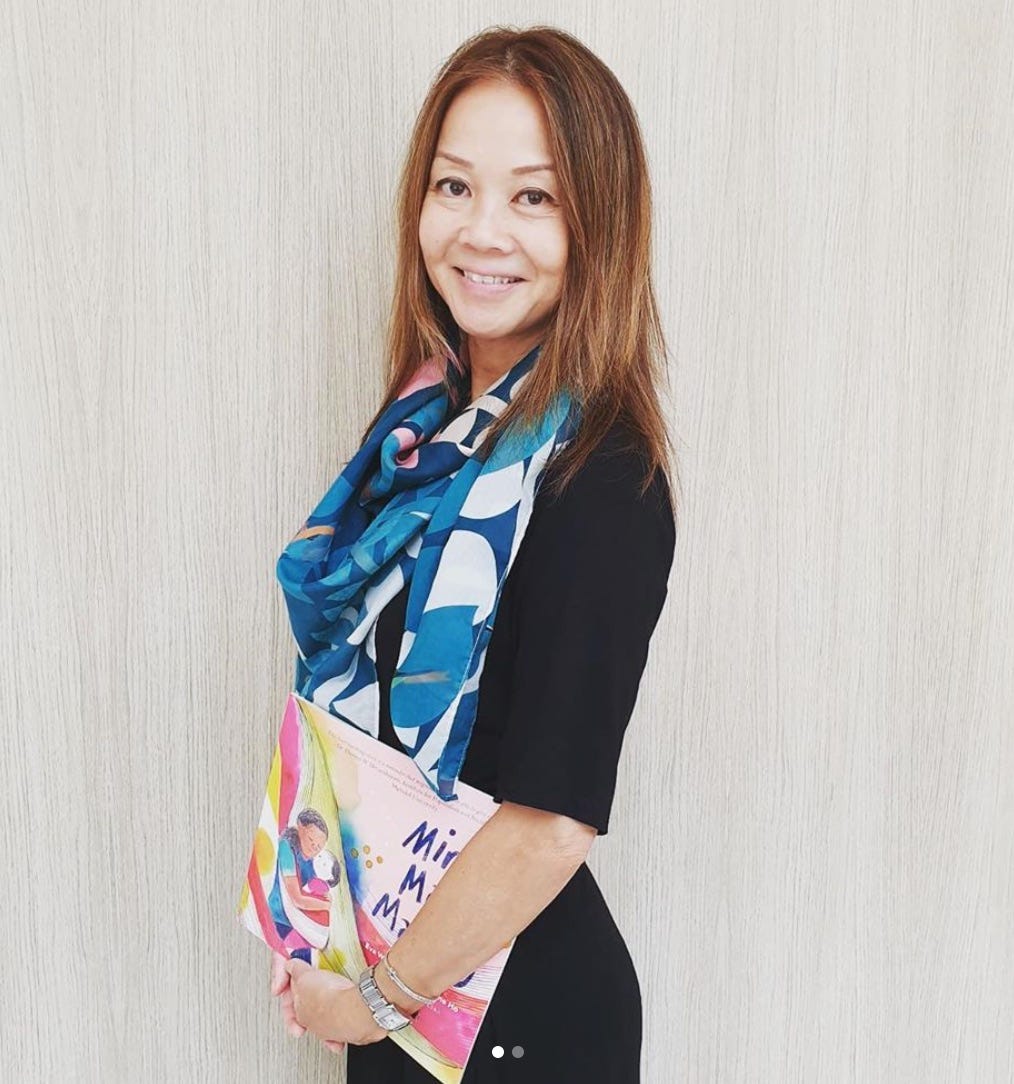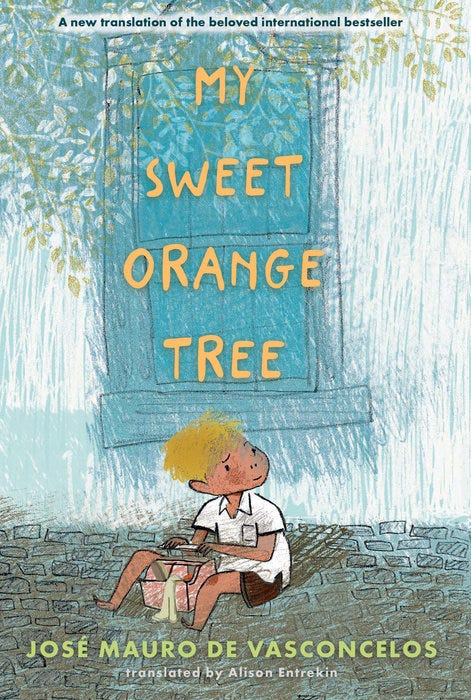If you’re looking for thought-provoking stories for kids, you can’t go wrong with Eva Wong Nava’s.

In Open: A Boy’s Wayang Adventure (2018), we get to know Open, a 10-year-old boy with autism and a talent for drawing, as he discovers a lot about himself and others when his class stages a Chinese opera based on the Monkey King and Journey to the West. (It won bronze in the Pre-teen Fiction – General category at the 2018 Moonbeam Children’s Book Awards.)
In The Boy Who Talks in Bits and Bobs (2019), we meet Owen, a boy with a speech impediment who finds a way to express himself as he overcomes challenges at school.
And in Mina’s Magic Malong (2019), we explore the special bond between Mina, a migrant domestic worker and caregiver, and a young child, Ella, as Mina says goodbye and returns to her homeland.
“To a more open and inclusive society”
That’s Eva’s tagline. Diversity and inclusivity are just two of the themes you can readily see and feel in her work.
“Books are windows to the world. Whether a book is written in the fantasy, sci-fi or speculative genres, kids have to be able to see themselves reflected back in the characters they’re reading about,” she stresses.
“There are many reasons for this. Readers relate more with the characters they feel represent them the most. It’s important for young ones to see that the world is not ‘perfect’ – that families aren’t just one-father-one-mother-two-kids units, for example (what’s perfection anyway?) – and that at least one character in the book has a disability (which is only one aspect of being diverse), or is struggling with something. This helps build compassion and empathy.
“It’s important for children to read about how differently-abled or perceived difference is being handled in the books they read,” she adds.
“Children are very quick to sense injustice, and if they see a character being unfairly treated, they will know it’s not right and empathise.”
We agree
Wondering if the young ones are ready for books with deeper messages and life lessons? Here’s one way to go about it.
“I say read your kids anything that’s age-appropriate, but not always books that are humorous and light-hearted,” Eva maintains. “There is goodness in reading books that talk about tough things.”
Then again, “As for my books, just read them because they were written to be read.”
More than that, the activity gives you a chance to ask questions and talk to your loved ones about important issues. Using her books, Eva shares some tips.
#1 Open: A Boy’s Wayang Adventure
“Start conversations about special needs, autism, and is this a special need. ‘Does being different mean the same thing as being special?’ This is a line in the book that can spark so many conversations about what it means to be special and different,” Eva relates.
#2 The Boy Who Talks in Bits and Bobs
“My debut picture book helps young readers understand the challenges of having a speech impediment. It also asks kids to be more understanding of those who find speaking difficult. ‘Why be understanding?’ is something that parents can explore with their kids after reading about Owen.
“This is a diverse book that highlights an oft-not-discussed topic – stuttering – in children's development, as well as in adult speech. I’d like readers to know that ‘your voice is stronger than you think’. I’d like to empower those who find speaking up and out challenging – that this is not just about speech impediments.”
#3 Mina’s Magic Malong
“It’s a picture book story about the bonds that bind us, especially the one between helpers and children. Singapore and many other countries are nanny-states, as most of us are two-parent working family units,” she observes.
“Ask your kids how they feel about being cared for by their helper, a nanny. Get them to talk about what separation means for them when the helper or nanny has to go home.
“Beyond that, talk about what it means for the kids when someone’s mummy (most female domestic helpers are mothers themselves) is the one looking after them. This again develops compassion in kids towards those who are foreign domestic workers.”
Add these to your own reading list
Want more? You can also consider Eva’s favourites. (We’d love to know yours.)
#1 Flamingo Boy by Michael Morpurgo
“This was published in 2018, and it’s about a boy on the spectrum (Flamingo Boy) and a Romany-Gypsy girl who ends up looking after him when they’re both adults,” Eva recounts.
“It’s a book about friendship and acceptance as much as it’s a story about an author trying to come to grips with his autistic grandson. Morpurgo was interested in exploring how perceived difference (being autistic, being a person from a different culture) can lead to them being ostracised and marginalised.”
#2 My Sweet Orange Tree by José Mauro de Vasconcelos
“This is a tender and funny autobiography published in Portuguese in 1968, translated into English (and many other languages, including Thai), and published by Pushkin Press in 2018.
“It’s about how a child’s imagination can make him ‘different’ from the rest, and how poverty can be debilitating. (I feel poverty is also a type of diversity as the word ‘diversity’ suggests, because not all of us are ‘crazy rich’.)”
#3 The Ghost Bride by Yangsze Choo
“This is a culturally diverse story written by a US-based Malaysian author about a little-known practice of ghost marriages,” she points out.
“What can I say? It’s a beautiful and haunting story of a girl who must marry a dead man.”
#4 Nadya by Debasmita Dasgupta
“This is my first graphic novel. Graphic novels don’t form part of my reading diet, but I love this one for its brevity, its artful illustrations and the theme. Nadya talks about divorce in a South Asian context, which is a stigma in Asia and a topic that is rarely featured in stories coming from Asia.”
#5 17A Keong Saik Road by Charmaine Leung
“I consider this a diverse book because it opened my eyes to a side of Singapore that I never knew about, even though I’d spent a good part of my childhood in this city-state,” Eva admits.
“The world of Keong Saik Road is hidden, one that the author grew up in shrouded in shame and stigma. It is a world that no child ought to be associated with since this world does not and should not belong to a child, but to the adults who circumambulate the sleazy world of female flesh and patriarchy.
“It was a heart-wrenching memoir to read, as it highlights an underground world that existed not so long ago and still exists in other parts of clandestine Singapore – a world which is associated with Thailand and Amsterdam (two specific examples I can think of), but not with Singapore.”
Aside from these, Eva herself has picture books and other projects coming out in 2020 and beyond, so watch out for them. Hopefully they’ll create more chances for a healthy dialogue between you and your child. Visit her website for more information.
Happy reading!





